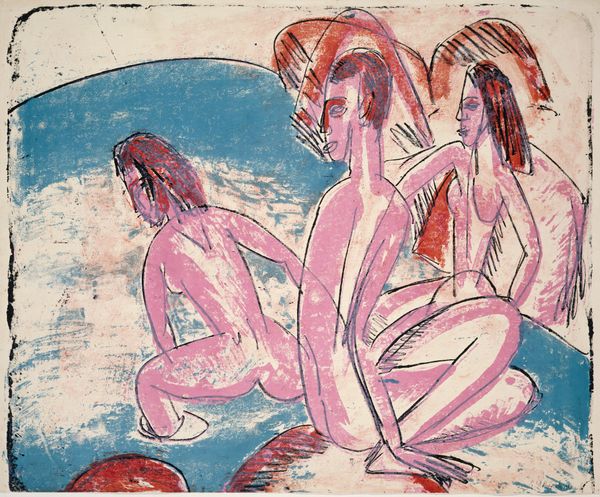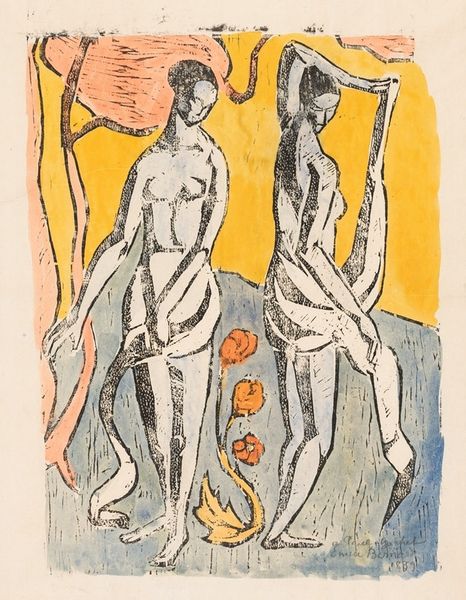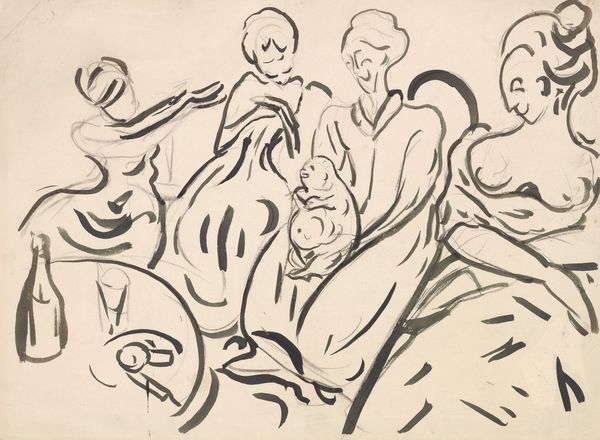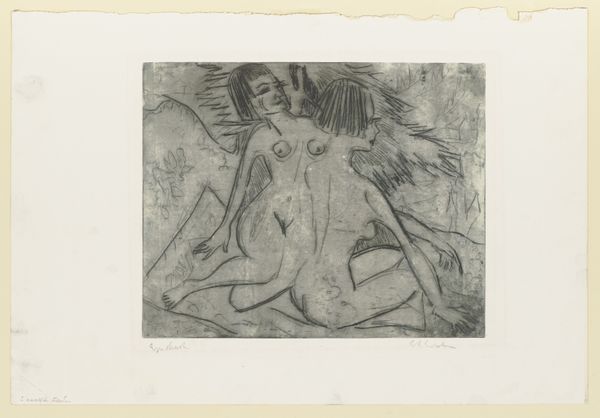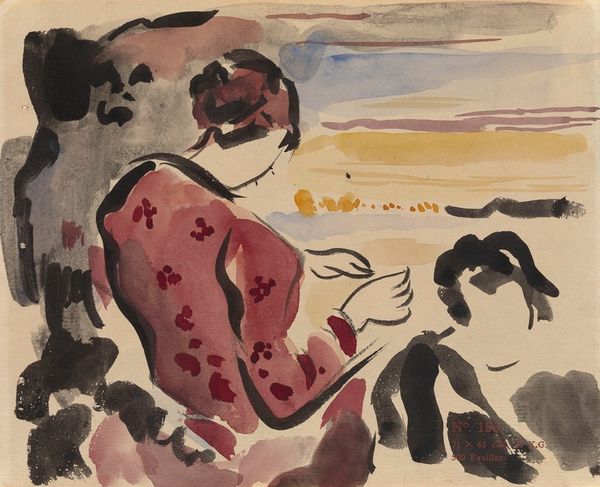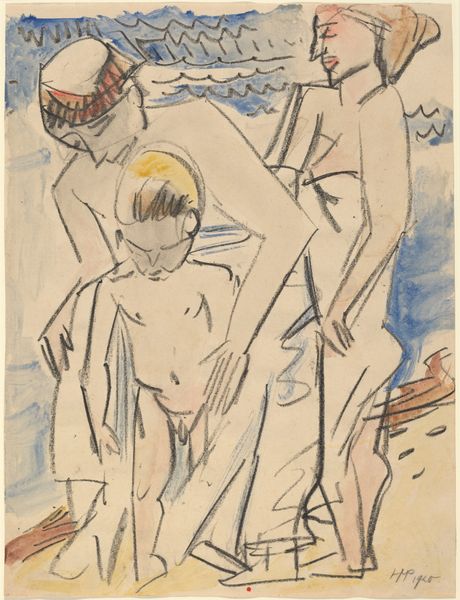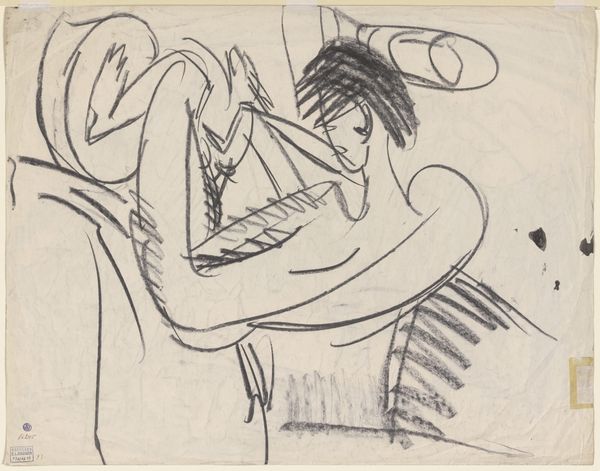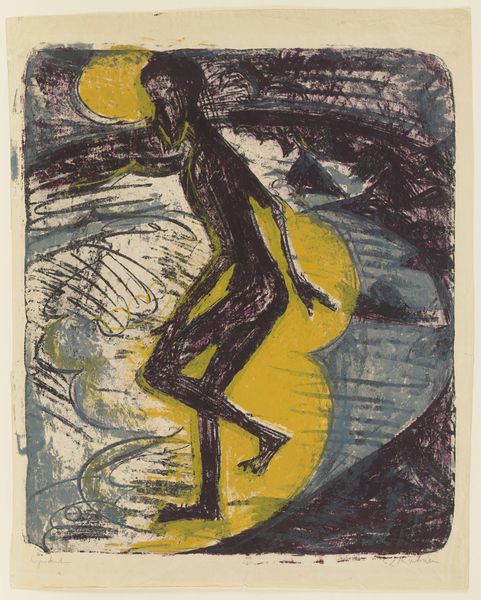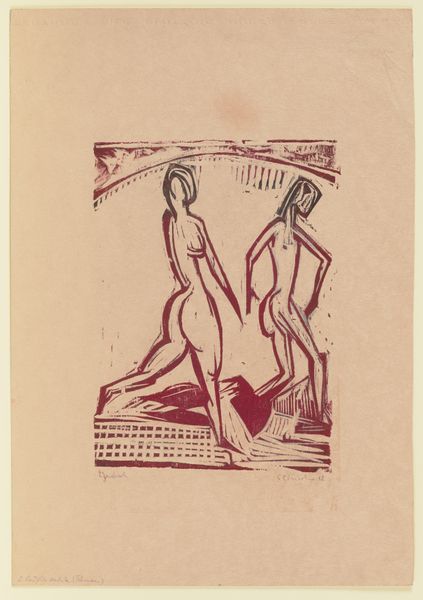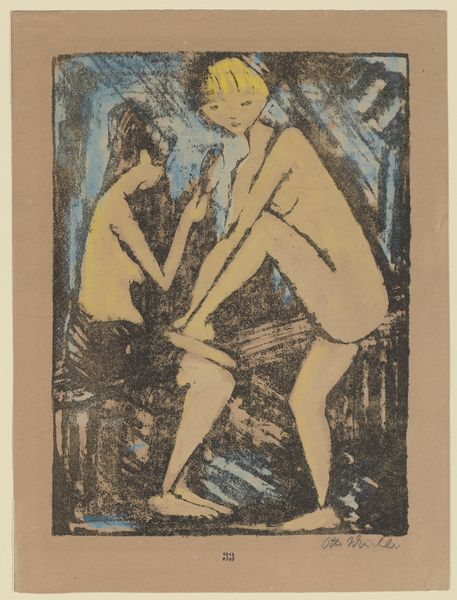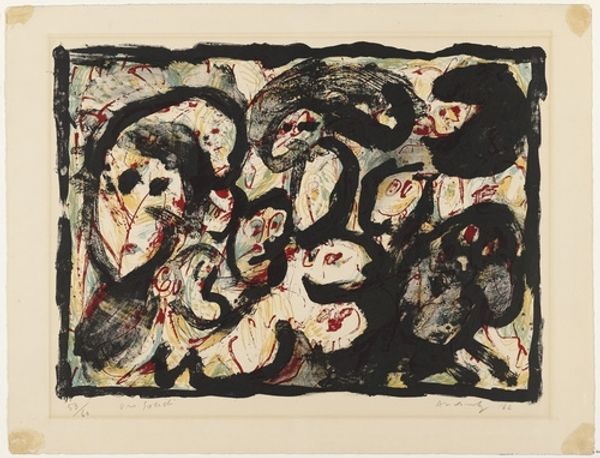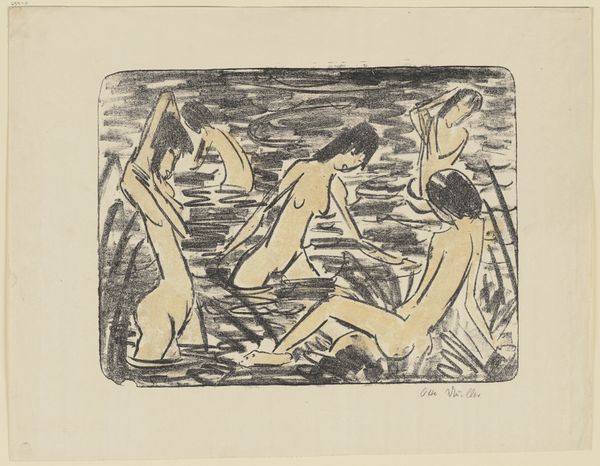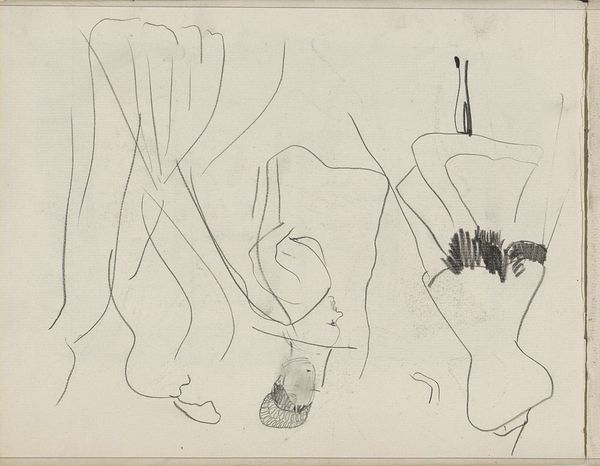
drawing, woodcut
#
drawing
#
figuration
#
linocut print
#
expressionism
#
woodcut
#
nude
Copyright: Public Domain
Editor: Here we have Ernst Ludwig Kirchner’s "Drei Badende an Steinen, Fehmarn" from 1913, a woodcut print currently housed at the Städel Museum. The stark colors and angular figures give it a somewhat unsettling, raw feel. How do you see this work, particularly in the context of its production? Curator: I’m drawn to the materiality of this woodcut. Consider the labor involved – Kirchner painstakingly carved these figures from wood, embracing the inherent roughness of the medium. It's Expressionism, of course, but what does this conscious choice of process and material tell us about his view of the world at that time, given the pre-war industrial context? Editor: That's interesting. The 'roughness' you mention feels very deliberate, a contrast to the increasing industrialization. Does it suggest a commentary on alienation from nature and craft? Curator: Precisely. He's not just depicting figures; he’s actively engaging with a pre-industrial method of production. The bold colors and jagged lines emphasize the physical act of making art, pulling it away from the polished perfection associated with traditional art academies. Are those colors readily available, uniform hues? Look closely at their application. Editor: They definitely feel less refined, more immediate, possibly reflecting a direct and somewhat visceral creative process. Would you say that connects to Expressionism’s emphasis on personal experience and emotional response? Curator: Yes, and that directness is enabled, indeed amplified, by his chosen method of carving. The labor, the materials, they become integral parts of the artwork’s meaning, beyond the mere representation of figures. Editor: I see it now. So, beyond the expressive figures themselves, the very act of creating this woodcut, the deliberate choice of a hands-on, perhaps 'primitive' technique, carries significant weight in understanding the artwork's overall message. Curator: Exactly! It’s a rebellion of sorts, a reclamation of craft in the face of mass production. Editor: This material-focused approach gives me a whole new appreciation for the print, connecting it more deeply to its historical and social setting.
Comments
stadelmuseum almost 2 years ago
⋮
During his time in Berlin, Ernst Ludwig Kirchner spent some summer months on Fehmarn. Because of its stony beach, the remote south-east coast of the Baltic island was rarely visited by other holidaymakers and thus provided the artist with perfect peace and privacy outdoors for his nude drawings. In the numerous works he produced there, Kirchner frequently portrayed Fehmarn as a South Sea paradise. The figures in this lithograph are defined primarily by masterfully executed sweeping lines in a natural setting which has been is reduced to a few symbols. Kirchner probably translated his drawings into prints in his Berlin studio as there was no lithographic stone available on Fehmarn. He left parts of the paper unprinted, creating the impression of a coloured drawing rather than a lithograph.
Join the conversation
Join millions of artists and users on Artera today and experience the ultimate creative platform.
